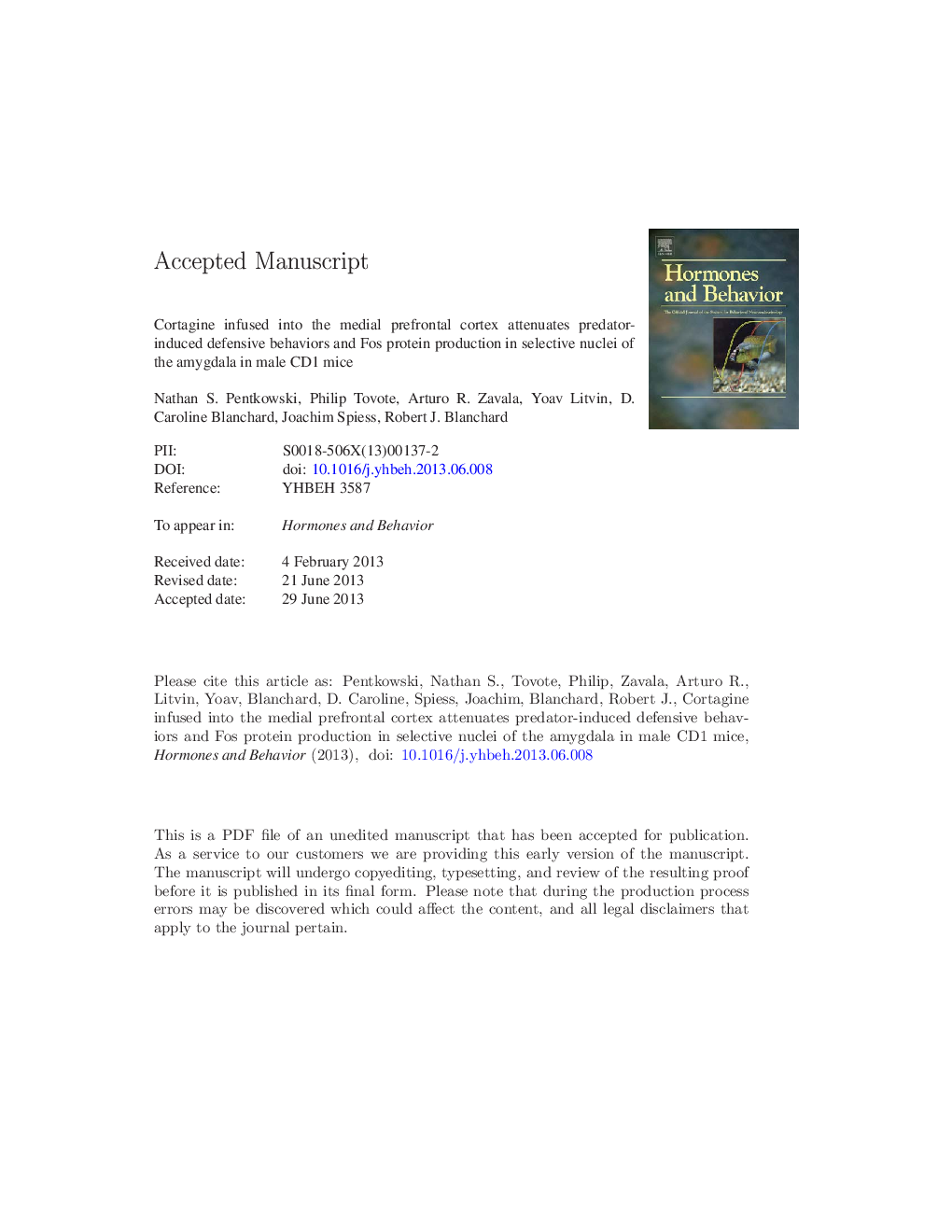| Article ID | Journal | Published Year | Pages | File Type |
|---|---|---|---|---|
| 10301101 | Hormones and Behavior | 2013 | 32 Pages |
Abstract
Corticotropin-releasing factor (CRF) plays an essential role in coordinating the autonomic, endocrine and behavioral responses to stressors. In this study, we investigated the role of CRF within the medial prefrontal cortex (mPFC) in modulating unconditioned defensive behaviors, by examining the effects of microinfusing cortagine a selective type-1 CRF receptor (CRF1) agonist, or acidic-astressin a preferential CRF1 antagonist, into the mPFC in male CD-1 mice exposed to a live predator (rat exposure test-RET). Cortagine microinfusions significantly reduced several indices of defense, including avoidance and freezing, suggesting a specific role for CRF1 within the infralimbic and prelimbic regions of the mPFC in modulating unconditioned behavioral responsivity to a predator. In contrast, microinfusions of acidic-astressin failed to alter defensive behaviors during predator exposure in the RET. Cortagine microinfusions also reduced Fos protein production in the medial, central and basomedial, but not basolateral subnuclei of the amygdala in mice exposed to the rat predatory threat stimulus. These results suggest that CRF1 activation within the mPFC attenuates predator-induced unconditioned anxiety-like defensive behaviors, likely via inhibition of specific amygdalar nuclei. Furthermore, the present findings suggest that the mPFC represents a unique neural region whereby activation of CRF1 produces behavioral effects that contrast with those elicited following systemic administration of CRF1 agonists.
Related Topics
Life Sciences
Biochemistry, Genetics and Molecular Biology
Endocrinology
Authors
Nathan S. Pentkowski, Philip Tovote, Arturo R. Zavala, Yoav Litvin, D. Caroline Blanchard, Joachim Spiess, Robert J. Blanchard,
